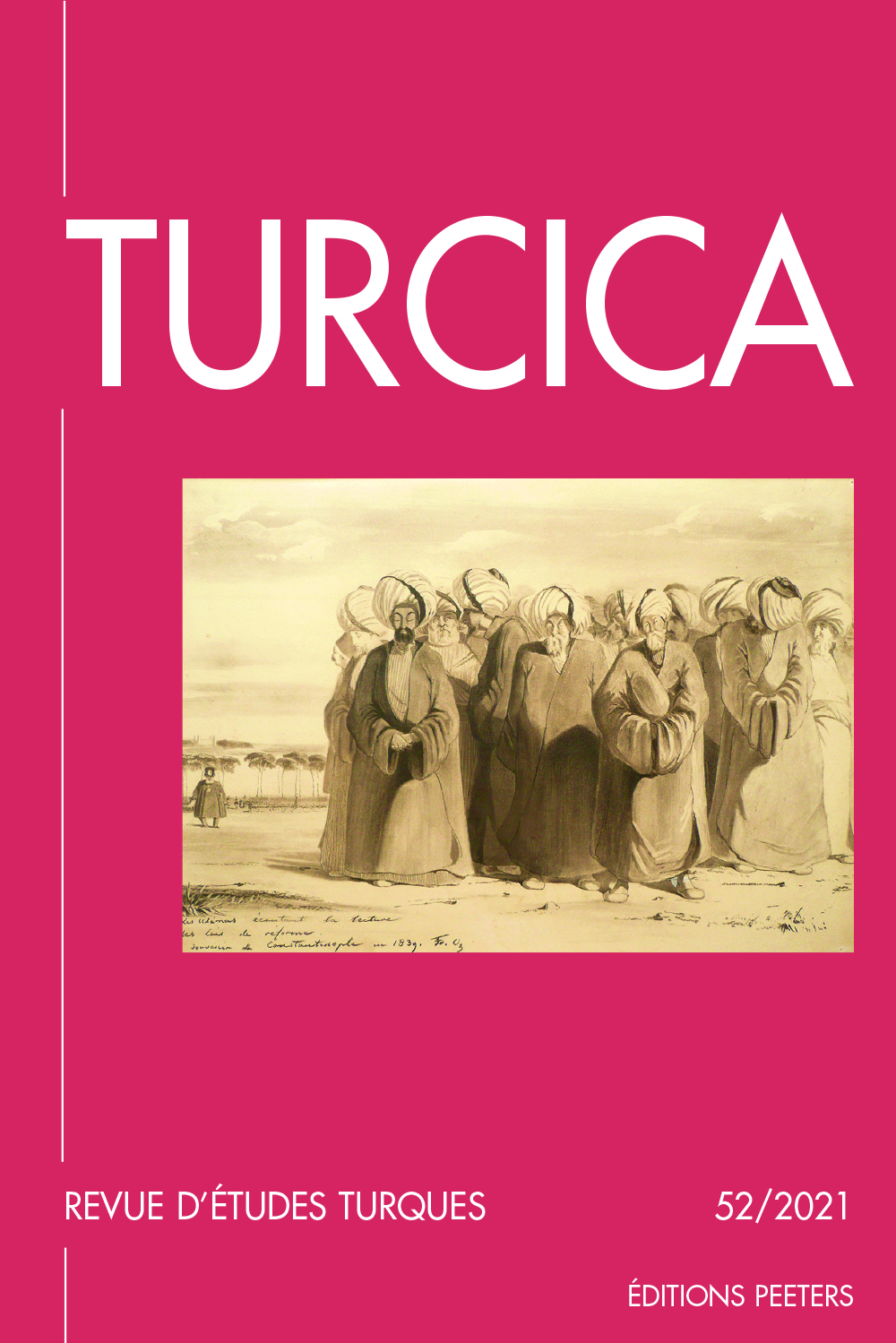next article in this issue  |

Preview first page |
Document Details : Title: The Relectant Pasha Subtitle: Çerkes Dilaver and Elite Localization in the Seventeenth-Century Ottoman Empire Author(s): WHITEHEAD, Christopher Journal: Turcica Volume: 53 Date: 2022 Pages: 3-43 DOI: 10.2143/TURC.53.0.3291331 Abstract : This article is a study of the life and career of the Circassian-born Ottoman soldier, governor, and provincial notable Çerkes Dilaver Pasha (d. 1658). Dilaver began his career in the cavalry branch of the Ottoman standing army (Altı Bölük Halkı), an increasingly influential organization in early seventeenth-century Anatolia. This study explores how he was able to use his status as a cavalryman first to integrate himself into the elite of the central Anatolian city of Kayseri, and subsequently to be promoted out of his local milieu and into the ranks of the empire’s provincial governors. He offers an example of the means by which members of the central army were integrated into provincial settings, as well as of the ways in which provincial notables cultivated ties to, and advanced within, the broader Ottoman elite. Never abandoning his connection to Kayseri, Dilaver returned to his city late in life and governed it for an unprecedented twelve years, a period that came to an end when he was executed for supporting the rebellion of Abaza Hasan Pasha. He was therefore not only a socially mobile cavalryman-turned-governor, but also a heretofore unstudied regional lord. In both capacities he continually straddled the boundary between the 'central' and the 'local', demonstrating the mutability and flexible nature of these too frequently reified categories. Cet article analyse la vie et de la carrière du soldat, gouverneur et notable provincial ottoman d’origine circassienne, Çerkes Dilaver Pacha (mort en 1658). Dilaver a commencé sa carrière dans la cavalerie de l’armée permanente ottomane (Altı Bölük Halkı), une organisation de plus en plus influente au début du XVIIe siècle en Anatolie. Dans cette étude, l’auteur montre comment ce soldat a pu utiliser son statut de cavalier d’abord pour intégrer l’élite de Kayseri en Anatolie centrale, puis pour se faire promouvoir hors de son milieu local dans les rangs des gouverneurs des provinces de l’Empire. Le cas de Dilaver est un exemple des modes d’intégration des membres de l’armée centrale dans les contextes provinciaux, ainsi qu’une illustration de la manière dont les notables provinciaux ont cultivé des liens avec l’élite ottomane (au sens large) et progressé au sein de celle-ci. N’ayant jamais véritablement abandonné son lien avec Kayseri, Dilaver retourne dans sa ville à la fin de sa vie et en devient gouverneur, fait sans précédent, pendant une période de douze années, avant d’être éxécuté pour avoir soutenu la rébellion d’Abaza Hasan Pacha. Dilaver fut ainsi non seulement un soldat de cavalerie qui bénéficia d’une grande mobilité sociale puisqu’il devint gouverneur, mais aussi un seigneur local que l’on n’a pas étudié jusqu’ici. Sans cesse à cheval entre le «central» et le «local», cette figure révèle la labilité et la flexibilité de ces deux catégories trop souvent perçues comme figées. |
 |


